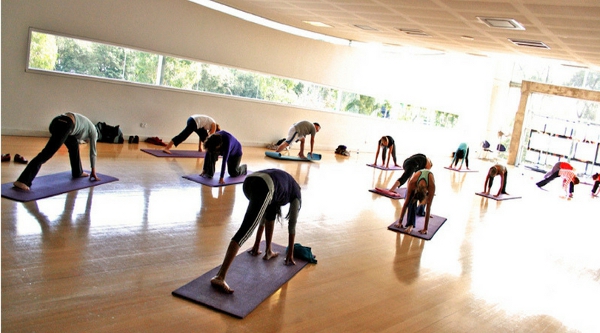What are the risks?
Like any other physical activity which has something to do with your fitness, Yoga, also has some risk factors involved in it. Risks in Yoga arise due to different reasons such as unfamiliarity with the adjustments and alignments, not having a proper diet, overestimation of your body’s capacity. It is a human tendency that we often try to replicate everything our teachers or expert students do, supplying our body extra thrust. We often start our Yoga practice from anywhere, overlooking the proper sequence. The irregular practice of yoga is also not beneficial for your health. There are people –weekend warriors who try to push their body to get the desired result. What they don’t understand is that Yoga is not about insistence, rather it is about adaptability.
Precautions to avoid risk factors during Yoga practice:
1. Practicing Yoga in a placid environment is highly preferable. The noisy atmosphere is an anti-concentration, it won’t help you focus on your practice. Early morning should be a great time for Yoga.
2. It is highly recommended by the Yoga experts not to practice Yoga if you are feeling unwell. It opposes your cause and can have negative effects on your health.
3. Yoga practice on a full stomach is not advised as it can have negative effects on your abdomen.
4. Physically weak person and heart patients are advised to avoid Pranayama and other breath related asanas.
5. Smoking, alcohol, pan masala, and other toxin containing substances while doing Yoga will only help you make ill.
6. Time duration is a very important factor while practicing Yoga. Practice time should be according to your capacity. Don’t push your body to practice for long hours, if you are incapable of doing so.
7. Yoga is all about physical and mental comfort, so make sure you are feeling comfortable with starting the practice. It would be wise to use easy-fitting cotton t-shirts and pants for Yoga
8. Every Yoga pose must be practiced only after reaching that level. Take your time to reach the expert level.
9. Another physical exercise after a Yoga class is not recommended. Wait for approx. 30 minutes before you do another physical exercise.
10. A proper yogic diet is only recommended to a Yoga aspirant. Sattvik food (pure) which includes fruits, vegetables, milk, butter, honey, bread are best for an aspiring yogi.
If most of the surveys are to believed, about 40% of the Yoga practitioners are unaware of the basic anatomy of Yoga. The reason behind this whopping number under threat is that either they do not follow proper guidelines or they do not practice under a well-trained Yoga trainer. One must have the knowledge of the adjustment and alignment techniques while practicing Yoga. Especially in Hatha Yoga, chances of injuries are high if the alignment of shoulders, hips, and knees is not proper. In Hatha Yoga, one must get complete knowledge of Yoga anatomy. It will help you gain more out of your Yoga practice. It would absolutely be fine to call adjustment and alignment a technique for better performance in the game of Yoga. It will have a lesser risk as you are under the watchful eyes of an expert. Also, one must take care of his/her diet. Yogic diet purifies your mind and body. They enhance the healing capacity of your body. It is advised to be hydrated while doing Yoga. Drinking 10-11 glasses of water is extremely beneficial for a Yoga aspirant. It helps clean the internal body system. These things must be kept in mind during Yoga for better results.








